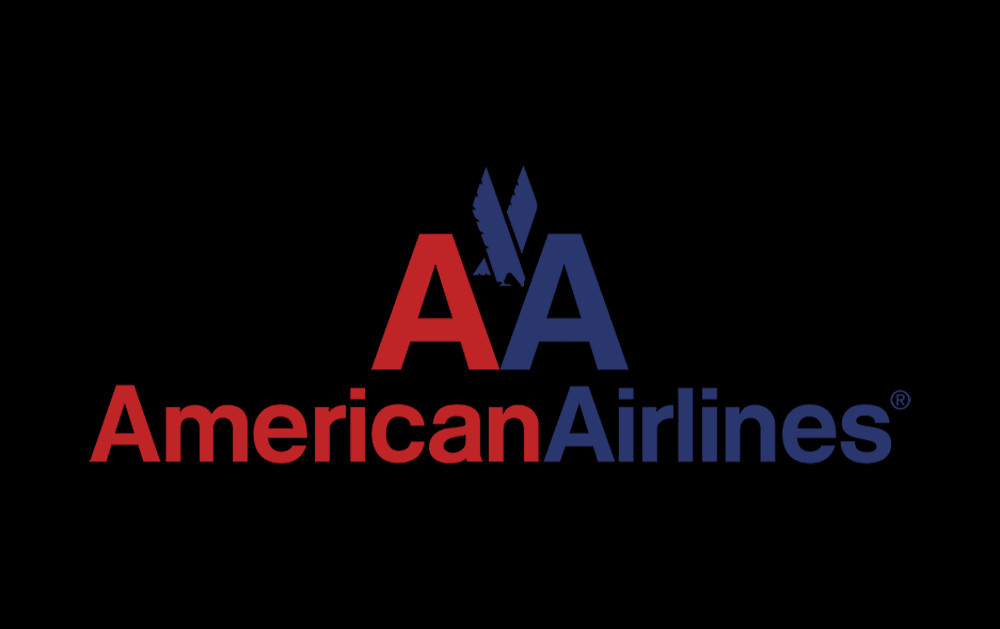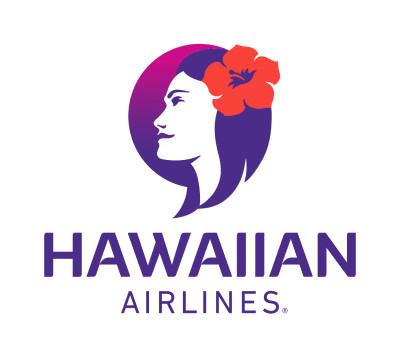Flying a dog on a plane alone can seem daunting, but it is achievable with careful planning and the right information. Flyermedia.net provides expert guidance on navigating airline policies, preparing your dog for travel, and ensuring their safety throughout the journey. By understanding the options available, you can make informed decisions and ensure your beloved pet has a comfortable and stress-free experience. Discover more about pet air travel, airline pet policies, and pet transportation services.
1. Understanding the Possibility: Can You Fly a Dog on a Plane Alone?
Yes, it is possible to fly a dog on a plane alone, but it’s essential to understand the limitations and options available. While many airlines allow pets to travel in the cabin with their owners, fewer offer the option of transporting pets unaccompanied, typically in the cargo hold. It’s crucial to research and select an airline that specializes in pet transportation and has a proven track record of safely handling animals.
1.1. What are the Challenges of Unaccompanied Pet Air Travel?
Flying a dog alone involves several challenges. These include:
- Airline Restrictions: Many airlines have specific rules and restrictions on breeds, sizes, and the time of year when pets can travel in cargo.
- Health and Safety: Ensuring your dog’s health and safety during transit, especially in the cargo hold where environmental conditions can vary.
- Stress and Anxiety: Minimizing stress and anxiety for your dog, as being alone in an unfamiliar environment can be distressing.
1.2. What are the Benefits of Using a Pet Transportation Service?
Pet transportation services, like those you might find through flyermedia.net, offer several benefits:
- Expert Handling: Professionals experienced in pet travel ensure your dog’s needs are met.
- Door-to-Door Service: Provides convenience and reduces stress for both you and your pet.
- Customized Solutions: Tailored to your dog’s specific needs, including breed, size, and temperament.
2. What are the Key Considerations Before Booking a Flight?
Before booking a flight for your dog, consider several critical factors to ensure their safety and comfort. The International Pet and Animal Transportation Association (IPATA) estimates that over 4 million pets are transported via plane each year globally, with 2 million in the United States alone, underscoring the importance of thorough preparation.
2.1. What are the Airline Regulations and Requirements?
Each airline has its own set of rules that can be confusing. Before making any commitments, you should:
- Research Specifics: Carefully read the airline’s pet travel policies.
- Size and Breed Restrictions: Some airlines have size and breed restrictions.
- Paperwork: Ensure you have all necessary documents, including health certificates and vaccination records from a USDA-accredited veterinarian.
2.2. What Vaccinations are Required for Dogs?
Typically, required vaccinations for dogs include:
| Vaccination | Description |
|---|---|
| Canine Parvovirus | Protects against a highly contagious viral disease. |
| Distemper | Prevents a severe, often fatal, disease affecting multiple body systems. |
| Canine Hepatitis | Protects against a viral infection that affects the liver. |
| Rabies | A mandatory vaccination to prevent a deadly viral disease that affects the nervous system. |
2.3. How Do New CDC Rules Impact Pet Travel?
The Centers for Disease Control and Prevention (CDC) has implemented new rules to limit rabies exposure in the United States. These rules may restrict pets from flying into the U.S. from countries considered high-risk for rabies. Always check the latest CDC guidelines before planning your pet’s travel.
 American Airlines logo with text on a white background.
American Airlines logo with text on a white background.
3. Which Airlines Allow Dogs to Fly Unaccompanied?
Not all airlines offer the option to fly pets unaccompanied in the cargo hold. However, some airlines specialize in pet transportation and offer specific programs to ensure your pet’s safety and comfort.
3.1. Does American Airlines Allow Unaccompanied Pets?
Yes, American Airlines does allow pets to travel in the cargo hold through its PetEmbark program. This service is designed for animals that must fly in cargo and don’t meet the checked luggage requirements.
- PetEmbark: Ensures your pet’s comfort and safety during cargo transport.
- Military and State Department: Checked pets are available for those in the military under orders or State Department employees on relocation orders.
3.2. Does Alaska Airlines Allow Unaccompanied Pets?
Yes, Alaska Airlines allows a diverse selection of pets to fly unaccompanied, including dogs, cats, household birds, rabbits, ferrets, guinea pigs, non-poisonous reptiles, tropical fish, and even pot-bellied pigs. The cost is $100 each way per pet.
3.3. Does Hawaiian Airlines Allow Unaccompanied Pets?
Yes, Hawaiian Airlines allows pets to travel in the main cabin, in the cargo hold, and unaccompanied. They permit dogs, cats, and household birds, with fees ranging from $60 for travel within Hawaii to $225 for flights to North America in the cargo hold.
3.4. What Happened to United Airlines PetSafe Program?
As of 2023, the United Airlines PetSafe program, which provided pet transportation as a checked item in the cargo hold, is no longer available to most passengers. Exceptions are made for military members on orders or State Department employees on relocation orders, transporting pets between Guam and Honolulu.
3.5. What Happened to JetBlue Jetpaws Program?
JetBlue discontinued the Jetpaws program. The current JetBlue pet transportation program allows small dogs and cats in the main cabin, with a limit of six pets per flight.
 Hawaiian airlines logo – airlines, cats.
Hawaiian airlines logo – airlines, cats.
4. How to Find and Utilize Flight Nannies?
A flight nanny is a pet transportation professional dedicated to accompanying your pet as they travel through the air. This option is perfect for pet owners who can’t join their pets on the flight.
4.1. What Do Flight Nannies Do?
- Airport Assistance: Flight nannies meet you at the airport and accompany your pet through security, boarding, and arrival.
- Care During Transit: They ensure your pet is comfortable and cared for throughout the journey, whether in the cabin or cargo area.
4.2. How Can CitizenShipper Help Find Flight Nannies?
CitizenShipper is a pet transportation marketplace where you can find flight nannies with a wide range of experience and price points.
- Cost Estimates: Get free cost estimates by posting a listing with your flight details.
- Receive Quotes: Within minutes, receive quotes from flight nannies.
- Communicate Directly: Chat with flight nannies who bid on your listing to discuss details.
5. What are the Best Practices for Preparing Your Dog for Travel?
Proper preparation is crucial for ensuring your dog’s safety, comfort, and well-being during air travel.
5.1. Why is a Health Checkup and Necessary Paperwork Important?
Before flying, your dog needs a health checkup to ensure they are fit for travel. You’ll also need to gather all necessary paperwork, including health certificates and vaccination records.
5.2. How to Familiarize Your Pet with Their Kennel?
- Comfort is Key: Make sure your pet is comfortable in their kennel.
- Weeks Before Departure: Start putting them in the carrier weeks before the flight.
- Long Periods of Time: Gradually increase the time they spend in the carrier.
5.3. What Items Should You Pack for Your Pet’s Comfort?
Pack items to help ease your pet’s stress and anxiety:
- Chew Toys: Provide distractions and comfort.
- Security Blanket: Offers a familiar scent and sense of security.
- Food and Water: Ensure they have sustenance for the journey.
6. Is It Safe to Fly Pets in Cargo?
Flying your pet in the cargo hold is generally safe for most breeds, but it’s essential to be aware of potential risks.
6.1. What are the Potential Dangers of Flying Pets in Cargo?
- Discomfort: Pets may experience discomfort.
- Lack of Oxygen: Insufficient oxygen levels.
- Air Pressure Changes: Changes in air pressure.
- Respiratory Distress: Breathing difficulties.
- Temperature Extremes: Risk of heat stroke or hypothermia due to lack of climate control.
6.2. How Can You Minimize Stress and Anxiety for Your Pet?
- Calming Chews: Provide calming chews to help reduce anxiety.
- Familiar Items: Pack chew toys, a security blanket, food, and water.
6.3. What are the Kennel Cargo Requirements?
Airline requirements for pets traveling in the cargo hold include:
| Requirement | Description |
|---|---|
| Kennel Size | Your dog should be able to stand up, turn around, and not touch the top of the crate. |
| Secure Locking | The crate should have secure locking with pins that extend past the extrusions above and below the door, using hardware instead of plastic fasteners. |
| Ventilation | The crate needs to be ventilated on all sides. |
| Identification | The crate needs to have your pet’s name and your contact information. |
| Food and Water Bowls | Water and food bowls need to be attached to the door and accessible from outside the crate. |
 A bearded man named Jason Luck, wearing glasses and a Chevrolet cap, smiles while holding a floppy-eared gray puppy. They are standing outdoors with a car trunk open in the background, hinting at their travel or pet transport plans.
A bearded man named Jason Luck, wearing glasses and a Chevrolet cap, smiles while holding a floppy-eared gray puppy. They are standing outdoors with a car trunk open in the background, hinting at their travel or pet transport plans.
7. What are Alternative Solutions to Flying a Dog Alone?
If flying seems too risky or stressful, consider alternative solutions for transporting your dog.
7.1. When is a Pet Transporter Needed?
A pet transporter may be the best choice if:
- Airline Restrictions: Airlines have restrictions on pets other than cats and dogs, snub-nosed breeds, and cargo hold options for domestic flights.
- Stress Reduction: Ground transport is less stressful for your pet.
- Reliability: Ground transport is more reliable, unaffected by weather-related flight cancellations.
- Convenience: Ground travel offers door-to-door delivery.
7.2. What are the Benefits of CitizenShipper?
CitizenShipper provides a reliable and affordable alternative to flying your dog alone.
- Screened Drivers: Drivers are screened, background-checked, and registered with the USDA.
- Competitive Quotes: Receive multiple quotes and chat with drivers before making a decision.
- Direct Communication: Communicate with the driver for updates and journey details.
- Rideshare Options: Save money with rideshare options where the driver transports multiple pets.
- Added Benefits: VIP Service, Pet Protection Guarantee, Booking Assurance Guarantee, and 24/7 TeleVet access through Vetster.
8. FAQ: Addressing Your Concerns About Flying a Dog Alone
8.1. Is it legal to ship a dog alone on a plane?
Yes, it is legal, but it depends on the airline’s specific policies and regulations. Not all airlines offer this service, so it is crucial to check with the airline beforehand.
8.2. What are the age restrictions for flying a dog alone?
Most airlines require that puppies be at least eight weeks old to fly. Some may have additional restrictions based on breed and size.
8.3. How do I ensure my dog’s safety during the flight?
Choose an airline with a good reputation for pet handling, ensure your dog is comfortable in its crate, and provide calming aids if necessary.
8.4. What paperwork do I need to fly my dog alone?
You typically need a health certificate from a USDA-accredited veterinarian, vaccination records, and any other documentation required by the airline or destination.
8.5. Can snub-nosed breeds fly in cargo?
Many airlines restrict snub-nosed breeds from flying in cargo due to their higher risk of respiratory issues. Check with the airline for their specific policies.
8.6. How much does it cost to fly a dog alone?
The cost varies depending on the airline, distance, and size of your dog. It can range from $100 to $1,000 or more.
8.7. What happens if my dog gets sick during the flight?
Airlines typically have protocols for handling sick animals, but it’s best to ensure your dog is healthy and fit for travel before the flight.
8.8. How do I track my dog during the flight?
Some airlines offer tracking services for pets traveling in cargo. Check with the airline to see if this option is available.
8.9. What are the best airlines for flying a dog alone?
American Airlines, Alaska Airlines, and Hawaiian Airlines are often recommended for their pet-friendly policies and services.
8.10. What can I do to reduce my dog’s anxiety during the flight?
Provide familiar items, calming chews, and ensure the crate is comfortable. Consulting with your veterinarian about anxiety-reducing medications may also be helpful.
9. Conclusion: Making Informed Decisions for Your Dog’s Travel
Flying a dog on a plane alone requires careful planning and consideration of various factors, including airline policies, pet preparation, and potential risks. By understanding these aspects and exploring alternative solutions like CitizenShipper, you can make informed decisions to ensure your dog’s safety, comfort, and well-being during travel. Visit flyermedia.net for more detailed information and resources to help you navigate the world of pet air travel.
9.1. Call to Action
Ready to make your dog’s travel dreams a reality? Explore flyermedia.net today for comprehensive guides, airline reviews, and expert tips. Whether you’re looking for flight nannies, ground transportation options, or simply need advice on preparing your pet for air travel, we’ve got you covered. Click here to discover how to make your pet’s journey safe, comfortable, and stress-free! Discover pet travel tips, airline pet policies, and pet transportation services today.
